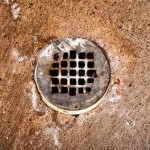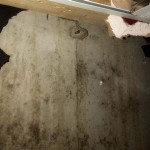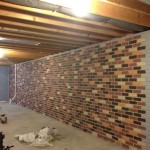How to Repair Small Cracks in Basement Walls
Cracks in basement walls are a common problem, particularly in older homes. They can be caused by a variety of factors, including settling, moisture, and temperature changes. While small cracks are typically not a major cause for concern, it's essential to address them promptly to prevent further damage and potential structural issues. This article will guide you through the process of effectively repairing small cracks in your basement walls.
Assessing the Crack
Before undertaking any repairs, it is crucial to assess the crack's nature and extent. Determine the following:
- Size and shape: Measure the crack's width and length. A hairline crack is typically less concerning than a wider crack.
- Location: Note the crack's location on the wall and whether it extends to the basement floor or ceiling.
- Movement: Observe the crack for any movement. If the crack is widening or changing shape, it could indicate a more serious structural issue that requires professional attention.
If the crack is wide, deep, or shows significant movement, it's advisable to consult a structural engineer for professional assessment and remediation.
Preparing the Wall
Once you've assessed the crack, prepare the surrounding area for repair. This involves:
- Cleaning the Crack: Remove any loose debris, dirt, or paint from the crack using a wire brush, vacuum cleaner, or damp cloth.
- Widening the Crack: If the crack is narrow, it's beneficial to slightly widen it to ensure proper adhesion of the repair material. You can use a utility knife or a small chisel for this purpose.
- Priming the Surface: Apply a bonding primer to the cleaned wall area to improve adhesion and prevent future crack formation.
Filling the Crack
The most common materials used for filling small cracks in basement walls are:
- Epoxy-based Crack Filler: This type of filler provides excellent adhesion, durability, and water resistance. It is suitable for both interior and exterior cracks.
- Acrylic Latex Caulk: Acrylic latex caulk offers good adhesion and flexibility, making it suitable for cracks that might move slightly. It's generally considered a more budget-friendly option.
- Polyurethane Caulk: Polyurethane caulk is highly durable and water-resistant, making it ideal for cracks exposed to moisture. However, it can be less flexible than other options.
When filling the crack, use a caulk gun to apply the selected material. Ensure it is applied evenly and firmly into the crack. Smooth the surface with a damp cloth or putty knife. Allow the filler to cure completely according to the manufacturer's instructions.
Further Steps
After the crack has been filled and cured, you can:
- Paint the Repair: Use a high-quality sealant paint to cover the repaired area and match the rest of the wall.
- Waterproof the Wall: If the crack is in a damp area, consider applying a waterproofing sealant to prevent further moisture penetration.
- Monitor the Crack: Inspect the repaired area regularly for any signs of movement or re-opening of the crack. If you notice any of these, seek professional advice.
Preventing Future Cracks
To prevent future cracks from forming in your basement walls, consider the following:
- Addressing Moisture Issues: Ensure proper drainage around the foundation, prevent water infiltration, and control humidity levels in the basement.
- Maintaining Proper Soil Conditions: Properly compact and maintain soil around the foundation to minimize settling.
- Regular Inspections: Schedule regular inspections of your basement walls and address any concerns promptly.
By taking these preventative measures, you can help protect your basement walls and avoid the hassle of future repairs.

How To Repair A Large Basement Wall Crack Stop Leaking Permanently

Basement Wall Crack Causes Symptoms And When To Worry

How To Repair A Foundation The Crack Iection Method West Allis Wi Accurate Basement

Diy Foundation Crack Iection Repair Costs Methods Risks Renco Home Improvements

Foundation Crack Repair Company St Louis

How To Repair A Large Basement Wall Crack Stop Leaking Permanently

How To Seal Basement Cracks

30 Concrete Foundation Crack Repair Kit How To Instructions

Basement Crack Repair Sealboss Corp

10 Types Of Basement Foundation Cracks You Should Know







